Tips for gardeners: when to plant garlic and how to do it right
Garlic - one of the healthiest vegetables in the garden. It not only gives the dishes a piquant and refined taste, but also relieves many diseases. It is an excellent disinfectant and antiviral agent.
It is very easy to grow garlic, an unpretentious culture that does not need special care. However, it is worth considering some features of the types of vegetables, their planting and timing will be different - autumn and spring. Therefore, an amateur gardener should take into account all the nuances in order to grow a rich harvest. We will analyze the features of spring and winter garlic, consider the timing of planting and the rules of care, and also arm ourselves with the knowledge of pest control.
Content:
- Spring garlic: species description
- Planting spring garlic: terms and rules
- Spring garlic care
- Winter garlic: species description
- Terms and rules for planting winter garlic
- Care Tips
- Diseases and pests
- When to harvest
Spring garlic: species description
The spring type of garlic is characterized by a specific shape, planting time and amount of harvest. This type of vegetable is an onion, the cloves of which are arranged in a spiral, small. More often Spring garlic does not throw an arrow, but there are varieties of arrows. Depending on the variety, the plant produces from 8 to 16 leaves, rectilinear, pale or bright green.
Root system spring garlic is weak, superficial. The culture grows well in loose and fertile soils. The vegetable loves sunny, warm areas, flat - without depressions and bumps.
This type of garlic differs from the winter garlic in the long shelf life of the bulbs.
The cloves retain their properties for one year. However, it is unlikely that it will be possible to grow a rich harvest of spring garlic; for these purposes, they resort to growing a winter species. There is one small feature of both spring and winter garlic - it does not tolerate "moving" from one region to another. If you plant cloves grown in Siberia, in the South, then they will not take root or give a very poor harvest. Keep this in mind. Before you start breeding a vigorous vegetable, you should consider the planting period.
Planting spring garlic: terms and rules
Garlic this type is planted very early - early or mid-April. The air temperature is low, positive - 2 ° -5 °. The snow should completely melt, and the soil should dry out a little. If you plant the cloves in soil swampy from melt water, they can rot.
Snow melting will always be a guideline for planting spring garlic, regardless of the region.
Choose an area for the plant that has the sun all day. You can not plant a crop where potatoes or onions used to grow.
Landing technology:
- The soil for garlic is prepared in the fall. 3-4 kg of humus are introduced into the soil or compost for 1 sq. m. You can also add superphosphate and potassium salt. The proportions are added according to the instructions on the package.
- If the ground is heavy loamy, add some sand. That is, it needs to be made looser and lighter.
- The soil is dug onto a shovel bayonet and left until spring.It is very important to prepare the soil for planting garlic in the fall, since it is impossible to dig up the garden in the spring - the earth has just woken up from the winter, it is still cold and hard, but it is already necessary to plant the crop.
- In early or mid-April, the ground must be buried.
- The cloves are planted shallowly - 3-5 cm deep at a distance of 10-15 cm from each other.
- Leave 20-30 cm between the rows.
- Agronomists recommend planting garlic in ridges or ridges. So the root system will not rot during a rainy summer or strong waterlogged soil.
Spring garlic care
In special care garlic does not need. In the first weeks of growth, when the ground has already absorbed all the melt water, the vegetable should be watered. He is very fond of moisture, especially during the formation of the root system. Late June and early July watering cut, and a couple of weeks before harvesting, watering is stopped altogether.
Weeding and loosening the soil is required.
It is not necessary to feed the plant, but if the soil is poor and no fertilizers were applied during preparation, it is necessary to feed the crop mineral and organic complexes... If the vegetable has thrown out the arrows, their tops with inflorescences are carefully cut off.
It is quite simple to grow a spring type of garlic, the rules of care and planting are simple. Even a beginner can master them.
Winter garlic: species description
Winter garlic differs from spring garlic in terms of planting, harvest size and taste. It is an onion, the cloves of which are located strictly in a circle, large. Leaves are rectilinear, dark green. The winter type of vegetable throws out an arrow that lignifies over time. Therefore, it is always distinguished by a dense, lignified stalk in the middle of the bulb. The spring species does not have it.
The winter species is very fertile and is grown for pickling, pickling, and for industrial purposes.
However, it is not easy to store, poorly stored. Therefore, the harvest is quickly processed. In household plots, both types of vegetables are often grown - for pickling and fresh storage in winter.
Terms and rules for planting winter garlic
Garlic this type is planted in late autumn. This should be done 2-3 weeks before the first frost - early or mid-October. The cloves are planted deeper than in the case of spring garlic. If planted closer to the surface, they can freeze. Although the winter species can withstand temperatures down to -40 °.
Before planting, be sure to familiarize yourself with the agricultural technology of growing winter garlic.
Planting agrotechnics:
- The soil must be prepared even when it is warm - August, September.
- Choose sunny areas where legumes, pumpkin crops, tomato, cabbage.
- Add humus 3-4 kg per 1 sq. M. To the soil, add superphosphate according to the instructions on the package and potassium salt.
- Dig up the soil thoroughly and leave until October.
- Heavy clay soil is diluted with sand.
- The cloves are planted already deeper, about 8 cm. The distance between the seeds is 10-15 cm. Between the rows - 20-30 cm.
- After planting, the bed is covered with a 10 cm thick layer of mowed grass or compost mulch.
The garlic may not be covered, but if the winter is snowless, there will be a risk of freezing of the seed. In the spring, after the snow melts, garlic already begins to sprout. The rules for caring for a winter type of vegetable are not much different.
Care Tips
During the period of the ovary of the root system, it is necessary to water the culture as often as possible. The garden bed must be weeded and loosened. Introduction fertilizers welcome, especially organic complexes. However, you should not get carried away with feeding. It is enough to enrich the soil in May-June, then feeding stops.
Caring for any kind of vegetable is simple and comes down to standard steps - weeding, watering and feeding.
During the growing season, the crop can hit pests and illness... In order to save the harvest, timely measures should be taken.
Diseases and pests of garlic
Despite the pungent aroma of root vegetables, garlic has many enemies - pests... Most often they appear in rainy summers on sandy loam or heavy clay soils. But, for example, a nematode can also welcome to fertile soil, where it is introduced by infected crops.
Common enemies of garlic are:
- Nematoda (affects the stem and root vegetable), garlic mite (feeds on the root vegetable) and onion mite (feeds on the root vegetable). Nematodes and mites attack the bulbs of the vegetable. Therefore, spraying the crop with chemicals will not lead to success. As a preventive measure, ash is introduced into the soil before planting, and the cloves are treated with manganese solution or saline. The soil is spilled without fail with a salt solution. The ratio of ingredients is 3.5 tablespoons of table salt per 10 liters of water. You can not plant garlic in place Luke or potatoes... The best option would be to land in the same place. tomato, cucumbers or cabbage.
- Onion fly (larvae feed on garlic pulp). It's easier to fight it. She is scared off with a solution consisting of tobacco, ground pepper, ash and soap shavings. The ratio is wood ash 100 g, 1 tablespoon of tobacco, 1 teaspoon of pepper. The components are mixed and diluted with 10 liters of water, 30-40 g of soap shavings can be added to the bucket. Spray throughout the growing season with a break of 7-10 days.
Garlic also has enough diseases:
- The most common are rust and black mold. The latter is typical for the southern regions, where it is always warm and humid. Rust can be found anywhere in wet weather. Garlic can also infect fusarium.
- A fungal disease can be determined by the changed color of the leaves - they turn brown, weaken and dry out. Having discovered a disease, the greens are cut and destroyed. As a fight, you can only carry out preventive measures - pickle the cloves before sowing, prepare the soil, add ash and properly care for the crop.
Diseases affect garlic quite rarely, a nematode is a more frequent guest. Always take pest control measures in time.
When to harvest
Fallen leaves are an obvious sign of the readiness of root crops. They wither and lie on the ground. This becomes the signal for harvesting. This is usually July or August, depending on the variety and species.
Garlic carefully removed from the soil and laid in rows to dry in the fresh air. If it rains, remove the vegetable to dry under a canopy. Once the bulbs are dry, remove the leaves with scissors or pruning shears. When pruning a root crop, a small leg is left - 2-3 cm.Now the crop is ready for storage... Store the bulbs in a dark, cool place. The vegetable can be stored in wooden boxes or other well-ventilated containers.
Housewives often put garlic in cloth bags.
Grow a rich harvest garlic not difficult. The main thing is to decide on the type of vegetable and choose the right plot for it. Easy care and planting is another cultural advantage. Do not forget that the spring species is grown in order to eat fresh vegetables all year round - it is perfectly stored. The winter species is best used for pickling and pickling. Good luck!
More information can be found in the video:




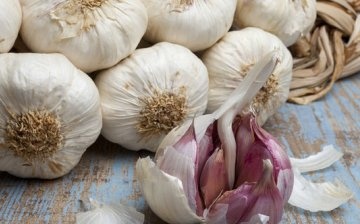

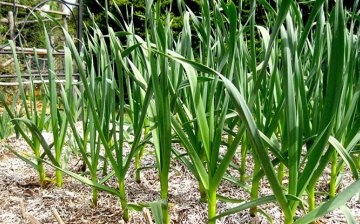
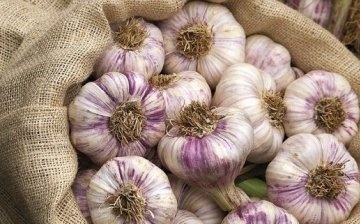

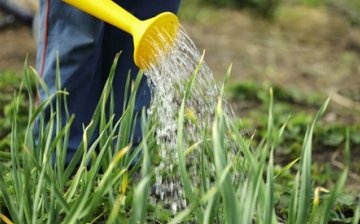
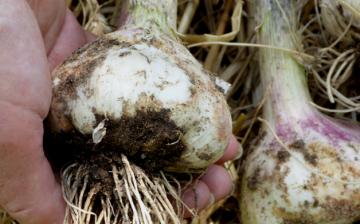
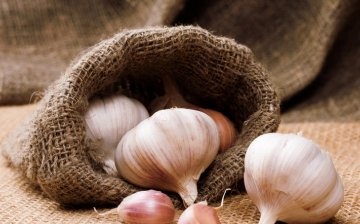









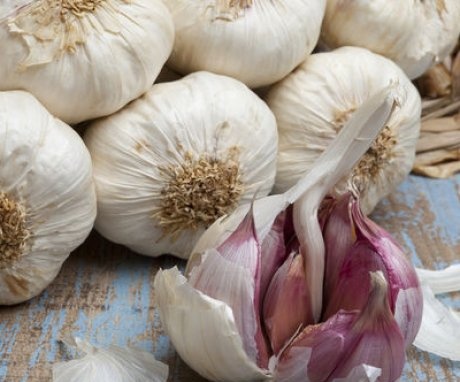
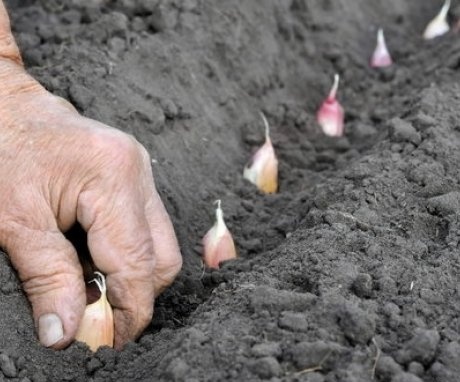
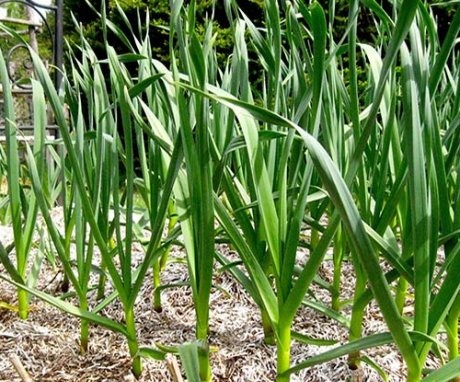
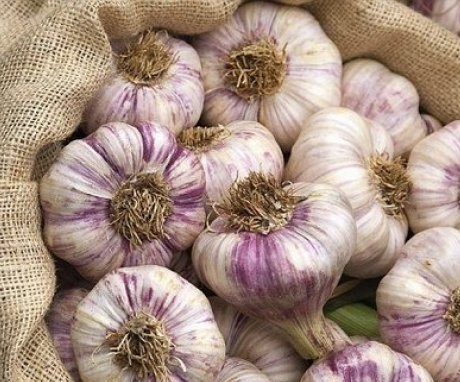
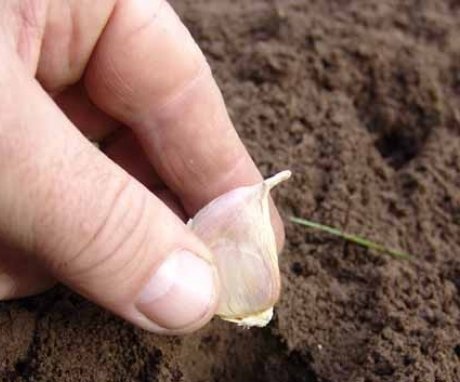
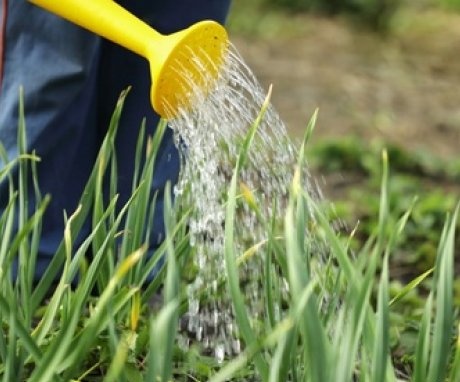
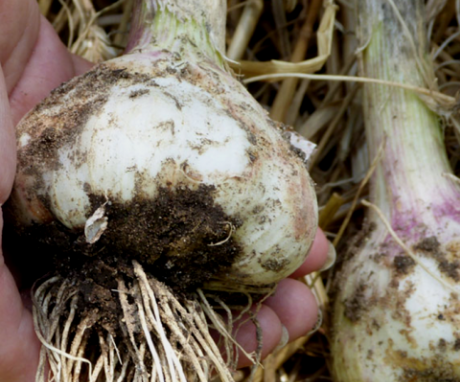
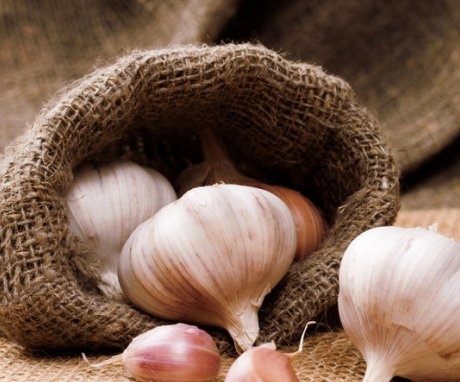
We always plant garlic, only before winter, because spring always grows very small. In order for the garlic to be stored well, it must be properly prepared for this, that is, dried and cut off the roots. After that, the garlic will be stored in the cellar until next spring.